December 6, 2012 at 2:18 pm
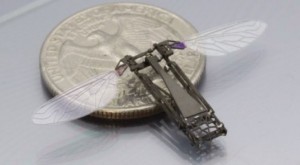
From http://micro.seas.harvard.edu/
At Harvard’s SEAS laboratory, Professor Robert Wood and his colleagues are making vast advances in the field of micro air vehicles. Their latest project, the Robobee, seeks to incorporate bio-inspired design with a state-of-the-art navigation system that allows for autonomous flight and coordinated work with other Robobees. Their team, which includes evolutionary biologists, engineers and computer scientists, implements many of the tricks that the bee uses to create lift in unsteady aerodynamic conditions in which classical aerodynamics struggles.
Read More »
By Cam Fowler
|
Posted in Student post
|
Tagged bee, bio-inspired, Harvard, insect, MAV, micro air vehicle, Robobee
|
December 6, 2012 at 2:30 am

Female Black-Chinned Hummingbird. Credit: Wikimedia Commons.
Of all the known species of birds, the hummingbird is perhaps one of the most iconic because of its unique ability to hover. The hummingbird has a number of adaptions that allow it to fly with breathtaking agility and precision. A new technique using stroboscopic laser sheets allowed scientists to see how air flows over a hummingbird's wing, which led to some surprising discoveries. Some of the aerodynamic effects used by the hummingbird can be found on all sorts of varying aircraft.
Read More »
By David Miller
|
Posted in Student post
|
December 6, 2012 at 12:49 am
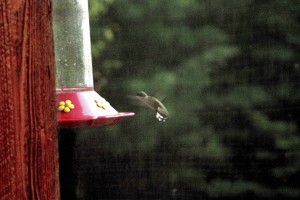
A humming bird in the Adirondaks, upstate New York
Mastering the art of flying was a huge feat for the human race, and an amazing accomplishment. It took intuition and engineering to interpret the methods by which flying animals engage in flight and put them together into mechanisms that allow humans to travel through the air for extended periods of time. After the first flying machines, which constantly had to be generating thrust to sustain flight, other modes of flying became intriguing to humans, hovering, for example.
One of the best, if not the best, hovering creatures on this earth is the hummingbird. But how can they engage in such an astounding act? How can these little creatures create the forces necessary to maintain airborne with no lateral or vertical motion? Read on!
Read More »
By Anthony
|
Posted in Student post
|
December 5, 2012 at 11:40 pm
There are many different special tricks used to aid animals in flight. From dynamic soaring to gliding, animals have found numerous ways to get airborne. One trick in particular is whats called "clap-flinging." It is a trick primarily used by insects, especially small ones, to increase lift during take-off. Without it they could not gain enough lift to be able to get off the ground.
Read More »
By nelsont
|
Posted in Student post
|
December 5, 2012 at 9:20 pm
There are many species of the hoverfly, about 6,000 in fact. The hoverfly is also referred to as the flower fly, or the syrphid fly, but also has many other common names, which are derived
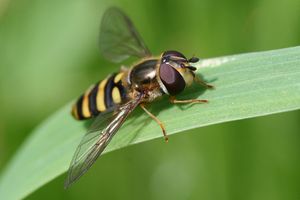
from their behavior of hovering around flowers. Hoverflies typically have black and yellow stripes, much like bees, and wasps as a form of protection. Because of their appearance, they can often be mistaken for a bee or a wasp. This acts as a form of camouflage and helps the hoverfly avoid potential predators who think that they have the capability to sting. They do however only have two wings, while the bee and the wasp have four. Read More »
By chevans9
|
Posted in Student post
|
December 5, 2012 at 8:57 pm
There are over a million different species of insects living on earth today. They are some of the oldest and most widespread animals on the planet. For hundreds of years, insects have been notorious for eating our food and carrying deadly diseases. What some people do not know is that they also help keep our earth clean and are key components of our ecosystems. Insects are the only invertebrates that can fly. They have used their wings to cover the world. Danielle Venton wrote that heir wings can be protective shells, musical instruments (grasshoppers), camouflage, signals to recognize each other, a means of attracting mates or warning predators, even tools to fly.
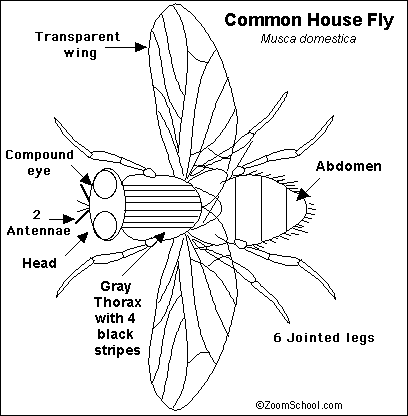 Read More »
Read More »
By Austin
|
Posted in Student post
|
December 5, 2012 at 1:49 pm

Male Amazon Kingfisher
Beware all fish, the mighty Kingfisher has set its sights onto you! There are over 90 species in the kingfisher family and in general they all have large heads, long, sharp, pointed bills, stubby tails, and short legs. All kingfishers have binocular-like vision with restricted eye movement, which allows for tracking fish underwater. Kingfishers are able to compensate for reflection and refraction of the water and can judge water depth very accurately. Generally Kingfishers are found throughout the world's tropics and temperate regions. The most unique species of the kingfisher family is the Pied Kingfisher because of all the surprising things it can do. Read More »
By Patrick Leach
|
Posted in Student post
|
December 5, 2012 at 3:22 am
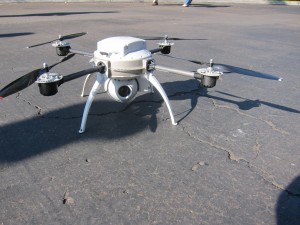
Datron Scout Air Reconnaissance System (ARS) Backpackable/Manpackable Lightweight Quad-Rotor VTOL Micro Air Vehicle (MAV)/SUAS/UAV for Tactical Surveillance Missions
When was the last time you thanked your inner ear? Probably not after riding a roller coaster or getting carsick, but what we sometimes curse and so often take for granted is nonexistent in insects such as flies. Flies lack the fluid in their head that helps us determine up from down, and yet, they still manage to fly on and navigate very complex courses. This fact has lead scientists to question how flies are able to orient themselves in space and move through obstacles.
Read More »
By Galen Perry
|
Posted in Student post
|
Tagged bio-inspired, hovercraft, insect, optic flow
|
December 4, 2012 at 11:36 pm
I think it is fair to make the assumption that almost everyone has seen, and perhaps even picked up a lady bug. When not flying, this beetle looks completely harmless, cute even, but when they lift their shell and show off their large, veiny wings, this creature takes on a completely different form.
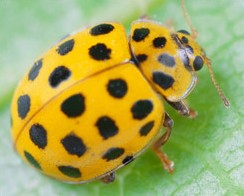
A yellow ladybug
The Ladybug, or Ladybird as it is called in many regions of the world, is an insect belonging to the beetle family. Most people can immediately recognize a ladybug by its scarlet shell with black spots, but few people know that this bug can also be yellow or even orange as well. The most interesting thing about the lady bug, however, certainly is not its appearance, but rather its ability to fly and the biology of the wings on this insect. Read More »
By dereckf
|
Posted in Student post
|
Tagged alae, coccinellidae, elytra, flight, insects, ladybird, ladybug, shell, wing
|
December 4, 2012 at 11:15 pm
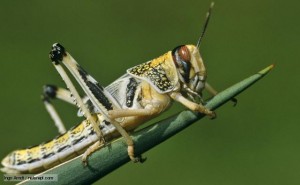
A fun part of my childhood was catching grasshoppers and dragonflies in a field near my house. I always had to find creative and stealthy methods to catch these creatures, and now I can learn how they are able to transport themselves.
Grasshoppers not only have strong legs for jumping, but they also can fly! This is how locusts-migrating grasshoppers- travel for such long distances. Desert locusts even have the fastest reliably meausured insect flight time at 33 km per hour. Though other insects can fly faster, the locust is a relatively easy animal to study considering it is larger in size. A study was done using the Schistocerca gregaria, desert locust, to understand insect flight performance. Read More »
By Virginia
|
Posted in Student post
|
Tagged locust
|








